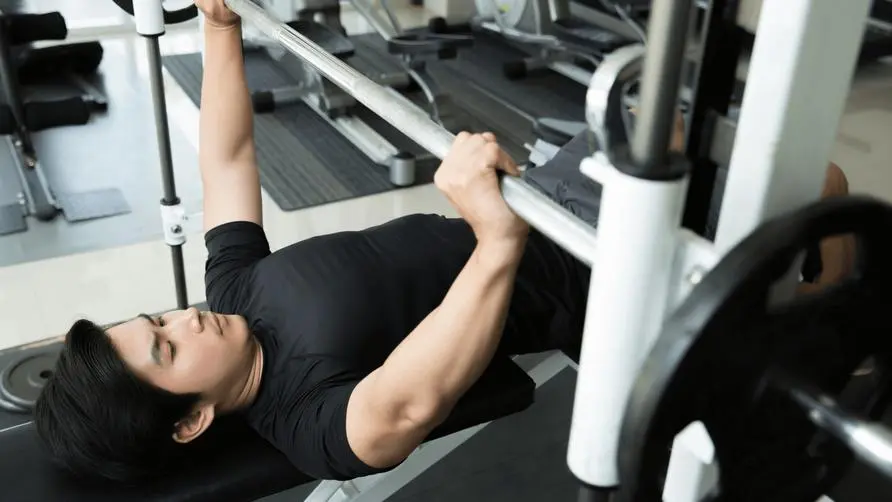Why can I still achieve "muscle hypertrophy" even with half the weight and half the number of sets? Research: The key lies in "this training"!

Can “less than half the weight” still have the same training effect? What are “eccentric training” and “centripetal training”?
In fact, if you only need to do half the target weight during strength training, you can actually achieve the same effect? A recent paper published in the “European Journal of Applied Physiology” stated that exercisers perform an action that lengthens muscles - Eccentric Muscle Action. Under this condition, even if the training volume and bar weight are halved, they can still achieve the desired results. Hypertrophy and the purpose of increasing muscle strength.
When it comes to muscle training movements, we must first clarify the difference between “eccentric contraction” and “concentric muscle action”. Eccentric contraction is a condition in which the contraction force of the muscle is less than the load, such as the process of “dropping” a dumbbell when lifting it. The key point is that the falling process needs to be very slow to achieve the effects of muscle hypertrophy and muscle growth.
Concentric contraction is when the muscle contraction force is greater than the load weight, such as the process of “lifting” a dumbbell when lifting it. The condition where the muscle length remains unchanged is called isometric contraction (Isometric Muscle Action), such as maintaining the muscle state during a half-squat.
Is lowering a dumbbell more important than lifting it? Research: Eccentric training has significant “muscle hypertrophy” effects
Edith Cowan University in Australia and Niigata University of Health and Welfare in Japan conducted a joint study to clarify the training effects of these two movements on bodybuilders. The study initially divided the subjects into 3 groups, with 14 people in each group:
Group 1: Perform only eccentric contractions.
Group 2: Concentric contraction exercise only.
Group 3: Do both eccentric and concentric exercises.
The subjects then performed resistance training on the elbow flexors of their dominant arm at an extended elbow joint angle (0°-50°) twice a week for 5 weeks. The results of the study showed that the thickness of the elbow flexors, biceps brachii and brachialis muscles of the three groups of horses, the “maximum isometric muscle strength” of group 1 and group 3 increased by 11.3% and 12% respectively; the maximum eccentric muscle strength They were 12.5% and 16.2%, the difference between the two was very small, and the eccentric force of group 2 was lower than the other two groups.
As for the maximum centripetal force of the three groups, the values in groups 1, 2, and 3 were 14.2%, 10.5%, and 17.5% respectively, and the difference was still not significant. To the surprise of the research team, although the number of training in group 1 was half that of groups 2 and 3, the degree of increase in strength was very similar, and the muscle thickness of the horses in group 1 was the greatest improvement, and the growth in group 1 was The amplitude was 7.2%, while that of group 3 was 5.4%; and muscle thickness is one of the important indicators of muscle hypertrophy.
Study author Professor Ken Nosaka said that this study confirms that eccentric contraction training may be one of the most effective training methods. “Understanding the benefits of eccentric training allows people to spend time exercising more effectively.” He said that the behavior of “controlling force” through eccentric contraction may be more important than “generating force” because this action is to improve muscle strength and enhance muscle strength. important means of quantity.
What movements can eccentric training be used for? Experts reveal that “6 menus” can be easily practiced at home
As for what movements can be applied to eccentric training? Professor Nosaka pointed out that people who are accustomed to gym training can perform the following actions by using dumbbells:
Bicep curl
Sitting dumbbell extension
Dumbbell front raise
When training your legs, you can incorporate eccentric training into the following movements:
Thigh extension (can be assisted by elastic bands)
Thigh curls
Heel raise training
Professor Nosaka further stated that the concept of eccentric contraction exercise can also be applied to home training. Through the following simple exercises, you can also achieve a certain level of training purposes. Professor Nosaka emphasized that after each eccentric muscle contraction, try to reduce the force required to return to the starting position (that is, concentric muscle contraction), and repeat each exercise 10 times:
Chair half squat: Start from a half squat position and slowly sit on the chair within 3 seconds. For advanced training, try half-squatting on one leg and then sitting down.
Chair recline: Sit in front of the chair, leaving space between your back and the back of the chair, slowly lean back within 3 seconds, and cross your arms in front of your chest or behind your head.
Unbalanced Squat: Stand behind a chair and lean to one side, allowing one leg to bear more weight, and squat within 3 seconds.
Heels Down: Standing behind a chair, lean forward and lift your heels. Then within 3 seconds lift one leg off the ground and lower the heel of the other leg.
Wall training: Lean against the wall with arms fully extended. Slowly bend your elbow joint within 3 seconds until your face is close to the wall.
Front Lunge: Place your left leg in front of your right leg and bend your knee deeper within 3 seconds.
Source:
Less gym time, same results: Why ’lowering’ weights is all you need to do
Further reading:





